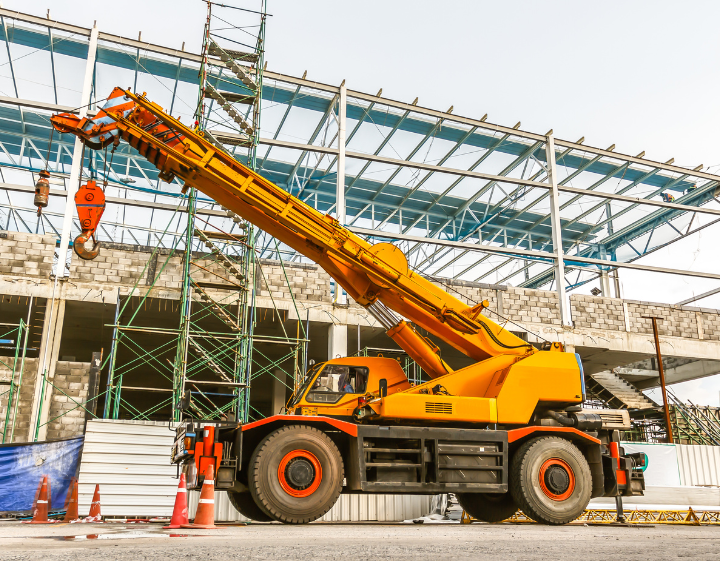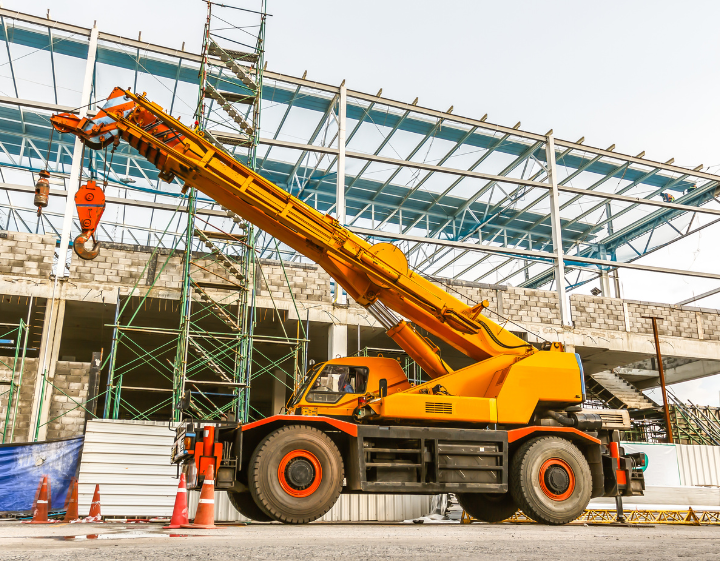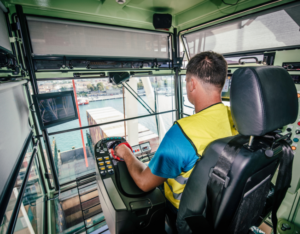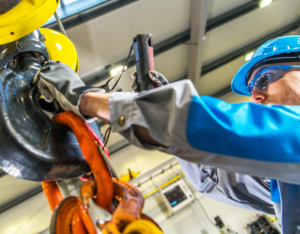Introduction
Mobile cranes have become an integral part of modern construction and industrial applications. These versatile machines play a crucial role in lifting and moving heavy loads with ease and precision. With their ability to be easily transported to different job sites, mobile cranes have become essential assets for various sectors, including construction, oil and gas, mining, and infrastructure development.
The aim of this article is to provide a comprehensive overview of mobile cranes. We will explore the different types of mobile cranes available in the market and delve into their specific uses in different sectors and scenarios. Whether it’s a telescopic crane, tower crane, or rough terrain crane, we will cover them all, discussing their unique features and capabilities.
Understanding the different mobile crane options is essential for professionals in the construction and industrial sectors. It allows them to select the most suitable crane for their specific needs, maximizing efficiency and productivity. With this knowledge, industry professionals can make informed decisions when it comes to mobilizing cranes for various tasks, ensuring the safety and success of their operations.
Follow along as we explore the world of mobile cranes and discover how they revolutionize the way heavy lifting is done in today’s construction and industrial landscape.

What is a Mobile Crane?
A mobile crane is a type of crane that is mounted on a mobile platform such as a truck or crawler. It is designed to be easily transportable to different job sites and offers the advantage of mobility and versatility.
The basic functionality of a mobile crane involves lifting and moving heavy loads using a combination of hydraulic systems and mechanical components. The crane is equipped with an extendable boom that can be raised or lowered to reach the desired height. It also has a winch system that allows for controlled lifting and lowering of loads. Some mobile cranes may also have outriggers, which are extendable legs that provide stability and support during lifting operations.
The components of a mobile crane include the boom, counterweight, cab, and control system. The boom is the main lifting arm of the crane and is typically made up of several telescopic sections that can be extended or retracted. The counterweight is located at the rear of the crane and helps to balance the load being lifted. The cab is where the crane operator controls the movement and operation of the crane. The control system consists of levers, buttons, or joysticks that enable precise and safe operation of the crane.
The advantages of mobile cranes lie in their mobility and versatility. Being mounted on a mobile platform allows them to easily navigate different terrains and access hard-to-reach areas. This makes them suitable for a wide range of applications, including construction, infrastructure projects, industrial operations, and emergency response. The ability to transport the crane to different locations eliminates the need for multiple cranes, thereby saving time and costs. Mobile cranes also offer quick set-up and dismantling times, increasing productivity and efficiency on job sites. Overall, mobile cranes provide a flexible and efficient solution for lifting and moving heavy loads in various sectors and scenarios.
Types of Mobile Cranes
Mobile cranes are essential equipment in various industries, offering mobility and versatility in lifting heavy loads. There are several types of mobile cranes available, each designed for specific applications and environments.
The truck-mounted crane is a popular choice due to its mobility and quick setup time. These cranes are mounted on a truck chassis, allowing them to navigate through roads easily. They can be driven to the site and set up quickly, making them ideal for applications that require frequent movement. Truck-mounted cranes are commonly used in construction sites, utility work, and infrastructure projects.
For off-road applications, the rough terrain crane is the go-to option. Its design features rugged construction and four-wheel drive, enabling it to operate efficiently in rough and uneven terrains. These cranes are commonly used in oil and gas exploration sites, mining operations, and construction sites with challenging ground conditions.
The all-terrain crane combines features of truck-mounted and rough terrain cranes, making it suitable for both on and off-road construction sites. These cranes offer excellent mobility on highways and rough terrain, making them versatile and adaptable to different job sites.
Crawler cranes are specifically designed for use on soft ground without the need for outriggers. They feature a track system that provides optimal stability and maneuverability. Crawler cranes are known for their capability to handle heavy lifting tasks in industries like bridge construction, steel erection, and large-scale infrastructure projects.
Lastly, the carry deck crane is a small, maneuverable, and versatile option for lifting in confined spaces. These cranes are commonly used in industrial facilities, warehouses, and shipyards where space is limited.
In summary, mobile cranes come in various types, each with unique features and applications. Understanding the different types and their capabilities is crucial in selecting the right crane for specific job requirements.
Choosing the Right Mobile Crane
When it comes to selecting the right mobile crane for a project, several factors need to be considered to ensure optimal performance and safety. The first step is to determine the load capacity required for the job. Mobile cranes come in various sizes and lifting capacities, so it is crucial to choose one that can handle the specific weight of the load.
Next, the reach of the crane should be taken into account. This refers to the distance from the center of rotation to the tip of the boom. The reach should be long enough to reach the desired location without compromising stability.
Another important factor is mobility. Consider the type of terrain the crane will be operating on, and choose a crane that can navigate through such conditions. Some cranes come with different types of tires or even tracks for improved mobility on rough terrain.
Lastly, consider any special requirements or features needed for the project. This could include features like telescopic booms, luffing jibs, or even special attachments for specific tasks.
By carefully considering these factors, it becomes easier to choose the right mobile crane for any given project. Whether it is a construction site, industrial facility, or any other sector, selecting the appropriate mobile crane will ensure efficiency, safety, and overall project success.
Common Uses of Mobile Cranes
Mobile cranes have a wide range of common uses across various sectors. In the construction industry, these cranes play a crucial role in building infrastructure, high-rise buildings, and residential structures. They are used to lift and move heavy materials, such as steel beams and concrete blocks, to different levels of the construction site. Mobile cranes also assist in the assembly of prefabricated components, making construction more efficient and time-saving.
In the manufacturing and industrial sectors, mobile cranes are essential for assembling heavy equipment and machinery. They provide the necessary lifting power to position and secure components during the manufacturing process. Additionally, mobile cranes are used for transporting and handling materials within factories, ensuring smooth and efficient operations.
In the transport and logistics field, mobile cranes are indispensable for the loading and unloading of heavy goods. They enable the safe and efficient movement of cargo onto trucks, ships, or trains, facilitating fast and reliable transportation of goods from one location to another.
Mobile cranes also find unusual but interesting uses in the entertainment and events industry. They are used to set up stages, lift and move large sets, and assist in the construction of temporary structures for concerts, festivals, and other events.
Overall, mobile cranes are versatile machines that provide valuable lifting and moving capabilities, making them essential for a wide range of industries and applications.
Conclusion
Mobile cranes play a crucial role in a wide range of sectors and scenarios due to their versatility and adaptability. These cranes have the ability to lift and move heavy loads, making them essential in construction, infrastructure development, and various industrial applications.
Choosing the right type of mobile crane for specific tasks is of utmost importance. It not only enhances operational efficiency but also ensures the safety of the workers involved. Whether it is a rough terrain crane for challenging terrains, a telescopic crane for compact spaces, or a crawler crane for heavy-duty lifting, understanding the capabilities and limitations of each type is essential.
Furthermore, factors such as load capacity, reach, and maneuverability must be carefully considered when selecting a mobile crane. By carefully assessing the requirements of the task at hand and matching them with the capabilities of the crane, operators can maximize productivity and minimize risks.
Overall, mobile cranes offer immense versatility and are essential tools in a wide range of industries. By selecting the right crane for the job and operating it safely, companies can achieve their goals efficiently and effectively.







